AUGUSTA, Ga. — The 2025 Masters was a war between Rory McIlroy and himself. On every possible level. A mental level. An emotional level. And at various points during the final round, a strategic level.
“My battle today was with myself,” he said. “It wasn’t with anyone else.”
Rory, in many ways, is simply too smart for his own good. If his performance at the 2025 Masters proved anything, it’s that Rory McIlroy is locked between the golfer he thinks he should be and the golfer he actually is.
.jpg.rend.hgtvcom.966.1449.suffix/1744642862278.jpeg)
Photo by JD Cuban
The golfer he thinks he should be is someone intentionally safe and purposefully unspectacular. Mature; maybe slightly boring. Scottie Scheffler with a Northern Irish accent.
He said as much earlier this year, and went through the motions by doing things like hitting an iron off the tee of the 72nd hole of the AT&T Pebble Beach Pro-Am with victory already secured.
“There’s impulses that I have on the golf course that it looks like Scottie doesn’t have and I have to … rein those in,” he said. “It’s strategy and picking more conservative targets at times.”
And then there’s the golfer Rory actually is. The swashbuckling, draw-slinging, slightly reckless, Arnold Palmer-Seve Ballesteros type. The guy who hits the wrong shot but has enough talent to actually pull it off which, in a roundabout way, actually makes it the right shot.
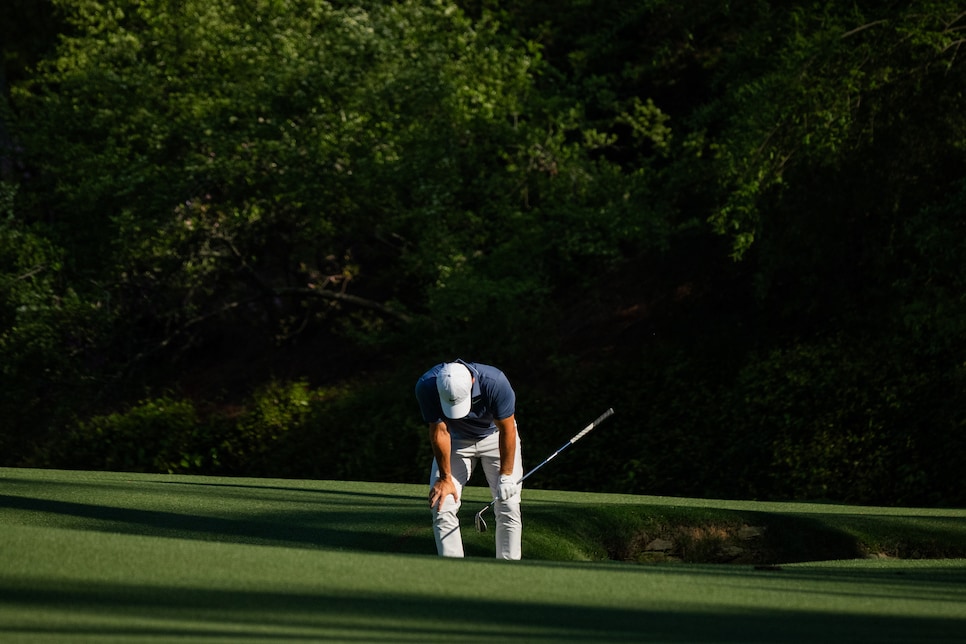
Photo by JD Cuban
Most times, Rory plays like the latter. But under pressure, he has a habit of overriding his instincts and playing like the former. And it never quite works.
Co-leading after 54 holes at the 2022 Open Championship, he aimed for the middle of 18 of the Old Course’s giant greens, hit every one, two-putted all of them, and lost by two. At the 2023 U.S. Open, Rory laid up on his final par 5 of the tournament, dunked his ensuing wedge into the bunker, made bogey and lost by two.
Sunday at the 2025 Masters turned when he harnessed the essence of who he is as a golfer.
I’m not sure Rory should’ve laid up on the 13th hole. Actually, I’m pretty certain of it. But in some perverse way, it may have actually been good for him. Just like the double bogey on his first hole on Sunday—and the two doubles at the end of his first round—it set him back and forced him to go on offense.
“In some weird way, the double bogey on one actually settled me down,” he said in his winner’s press conference.
RELATED: Masters 2025: No one has summed up a round of golf better than Brandel Chamblee summed up Rory’s 73
It’s on offense where Rory thrives, and throughout the 2025 Masters we saw moments of Rory trying to be the best version of himself by chasing something he isn’t, failing, and then circumstances forcing him to play as the golfer he inherently is.
The late doubles on Thursday forcing him to chase birdies on Friday and Saturday.
The opening double on Sunday.
His amazing recovery from the trees on the 7th hole.
Roping a hook 7-iron around a tree on 15—a shot he probably had no business hitting—after heartbreak on 13.
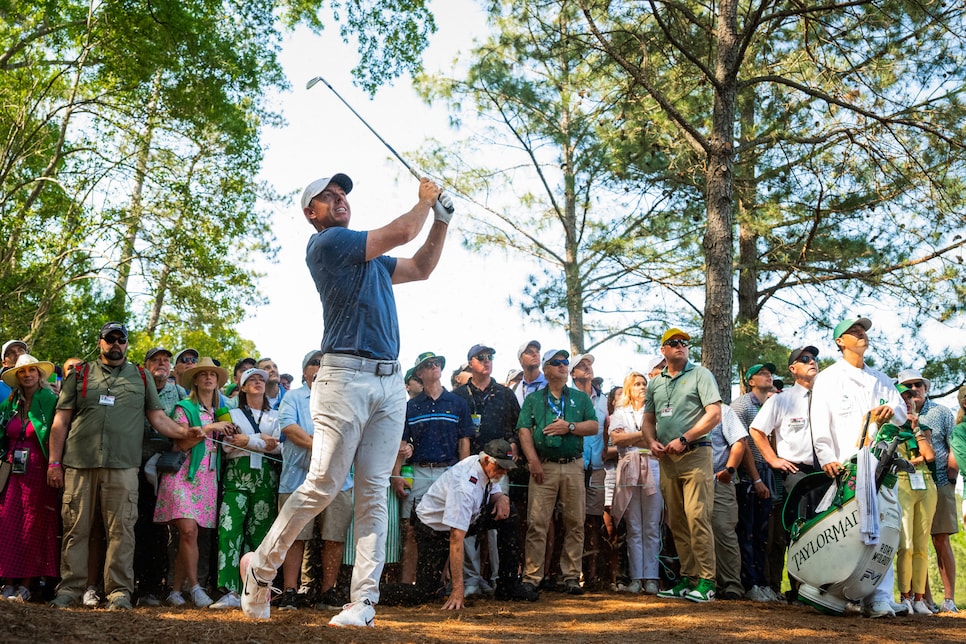
Photo by JD Cuban
At the risk of being too sappy, I think the lesson here is to understand who you are, as a person and as a golfer, and to lean into that. Maybe even override conventional wisdom at times when your gut is telling you to, because that’s where the magic is.
“I probably would see a young man with a lot of learning to do and a lot of growing up to do,” Rory said of his 2011 self, after his victory. “I probably didn’t understand myself. I didn’t understand why I got myself in a great position in 2011, and I probably didn’t understand why I let it slip in a way. But I think just having a little more self-reflection; that experience, going through the hardships of tough losses and all that; I would say to him, just stay the course. Just keep believing.”
RELATED: Masters 2025: Rory McIlroy proves the safe play is not always the right one, and it changed the trajectory of his final round
1. Keeping things in context makes everything better
At various points during the final round I had no idea how Rory would manage hitting another golf shot after the latest series of gut punches landed. Like after his six-foot par putt on the 72nd hole burned the edge, forcing a playoff. Were it not for a few wise words from caddie Harry Diamond, there may have been no coming back…
“After scoring, Harry and I were walking to the golf cart to bring us back to the 18th tee, and he said to me, ‘Well, Pal, we would have taken this on Monday morning,’ ” Rory recalls. “That was an easy reset. He basically said to me, look, you would have given your right arm to be in a playoff at the start of the week. So that sort of reframed it a little bit for me.”
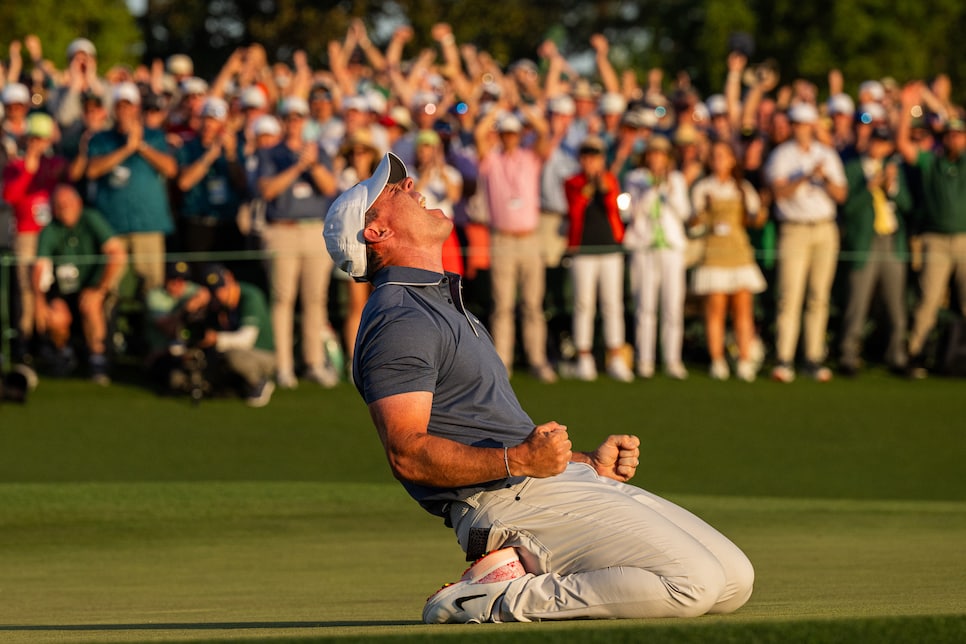
A good reminder that seeing both the good and bad in a wider context is perhaps the best weapon you have as a golfer. The old ‘a bad day on the course is better than a good day in the office’ idea. It’s a brutally overused cliche, but it works every time.
RELATED: Rory McIlroy unleashed a nasty new shot at Augusta National
2. Trying to get better is the only way of not getting worse
Rory McIlroy spent most of his offseason hitting golf balls into a blank screen, working on his golf swing. His partner in the final group on Sunday, Bryson DeChambeau, is constantly in search of upgrades. As is the man who almost grabbed the green jacket from his hands, Justin Rose.
“For me, being professional is about fulfilling my childhood dreams, really, and giving everything I’ve got and no regrets,” Rose said. “I think that’s what it’s all about for me is just trying to look under every stone, push myself as hard as I can to be the best I can be, and I think that’s what being professional is.”
It’s easy to freeze up when things are going well in your golf game. To keep your hands at 10 and 2, and not make any changes to what you’re doing at risk of screwing up what you have.
The thing is, I’m not sure that ever actually works. For pros or amateurs alike. When you stop trying to get better at this ridiculous game, you instantly start getting worse. Little things become big things, and the problems are harder to fix than preventing them in the first place.
“We have a saying at the junior academy where I teach: ‘brush your teeth,’ ” says Hans Larsson, Ludvig Aberg’s longtime coach. “Making little changes every day makes it normal, and routine. It keeps you healthy. If you don’t brush your teeth, you get cavities.”

Photo by Stephen Denton
3. Tweaking your setup can solve lots of problems, quickly
One way that Ludvig brushes his teeth in his golf swing? Constantly tweaking his setup.
Ludvig and Larsson start every range session doing Tiger’s nine window drill, and when he sees a result he doesn’t like, they start making little calibrations to their setup to get the result they want.
Let’s say Ludvig starts missing left, as he was coming into the 2025 Masters. The pair flares his left foot, which allows his hips to open slightly more. If he misses right, it may be because his hips are opening too much, so he’ll square off that left foot. If he’s still missing right, he’ll strengthen his grip. Little setup tweaks, which both take hold quickly and are easy to do. It’s only when those don’t work that they dive into the bigger swing changes.
“The golf swing is a series of clubface openers and clubface closers,” Larsson says. “Every day we’re recalibrating the setup to make sure the openers and closers are balanced.”
RELATED: Masters 2025: Everyone knows Scottie Scheffler’s superpower—but they can’t do it
4. Teach yourself to react to the target
A lot of golfers talk about being athletic and reacting to the target.
Sounds cool, but what does that mean, exactly?
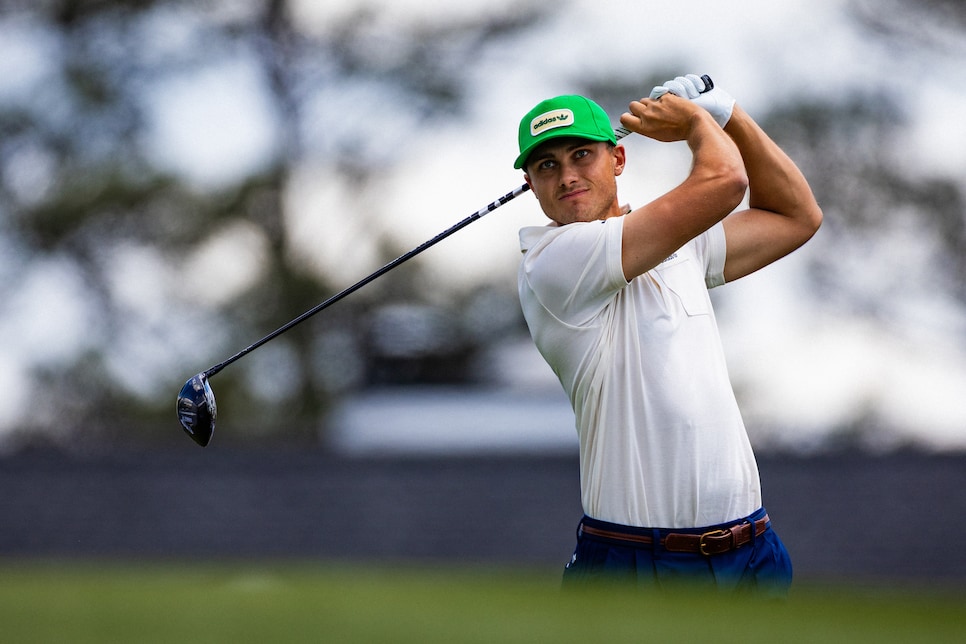
Photo by Stephen Denton
“I would describe being athletic as trusting myself or my ability,” says Justin Thomas. “The 10th tee shot is a great example. I probably couldn’t tell you exactly where I’m aiming. I couldn’t tell you how far right I’m swinging, about a swing path or a face angle. I’m going to aim right and I’m going to shut the face down and I feel pretty good that it’s going to turn right-to-left.”
Interesting stuff. But how can I make my golf swing more athletic?
Larsson has one suggestion, in the form of a drill. With students of his that are too much in their own head, clogged with swing thoughts, he’ll force them to stand with their back to the target, then name the target and count five seconds. In that space of time, they have to hit their ball at the target. It’s a game we can try ourselves, to force ourselves to get out of our own way, and connect to the target.
It’s an innately human advantage. Try to become a robot, and the best you’ll be is a bad version of one. Harness your human instincts, and your potential is unbound.
5. Hitting lots of golf balls before your round is overrated
One thing I learned this week? That pros don’t hit as many range balls as I thought.
Bryson smashing more than 1,000 golf balls over the week was a much talked about subplot over the week, but interesting stuff was also happening at the other end of the spectrum. Aaron Rai hit just 57 golf balls in the leadup to the Masters—less than 30 per day.
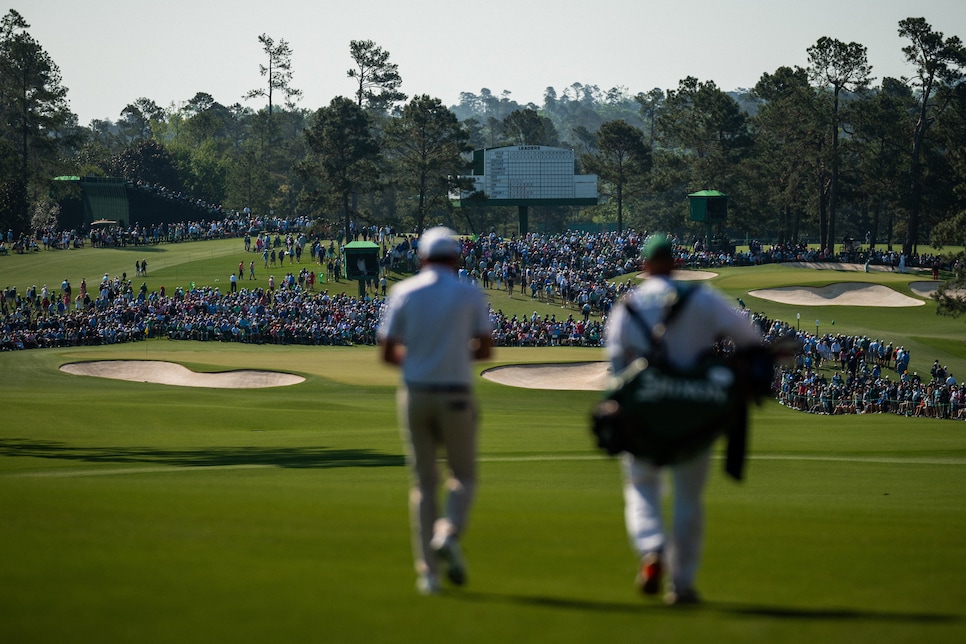
JD Cuban
When I asked him about it he said it was, in part, because the Masters differs from tour events in revealing to players hole locations the morning before their round, rather than the night before, so he cut his practice sessions each morning short to study where, exactly, he wanted to aim.
The other was because, quite simply, hitting golf balls before your round is slightly overrated. Get your course strategy in order, and get your literal warm-up via stretching, and other exercises.
“I really just hit a few golf balls to get comfortable,” Rai said. “I spend time warming up in the gym, and I find studying the course is time better spent.”
RELATED: Masters 2025: The appropriate equipment tweak Rory McIlroy made for Augusta National
6. Confidence and trust in what you’re doing wins all
Denny McCarthy is one of the best putters on tour, and popped onto the first page of the leader board at various points. He’s really thoughtful about the craft of putting, so I asked him: How do you do it well out here?
“I learned that everything pulls down toward Rae’s Creek,” McCarthy says. “You’ve got to give some putts a little extra, and others a little less. Once I figured that out, it really helped.”

Photo by JD Cuban
I did a double take when he said that, because enough experts have told me at this point that it’s not true. Rae’s Creek doesn’t have a force of gravity of its own, pulling balls on the other end of the course toward it.
Yet McCarthy is an expert himself, and the more valuable kind. The kind who can actually do it. If he’s not intuitively picking up on something that’s true, how can we make sense of the fact that he may be so good at something, while also being wrong?
“For some players, their greatest asset isn’t being correct about the specifics,” biomechanist Sasho Mackenzie says, not on Denny McCarthy himself but on tour players generally. “It’s about believing in what they’re doing, and having trust in that.”
It goes back to the old “the wrong shot is the right one if you commit to it fully” idea. Trust in what you’re doing, above all else, may be the only currency that matters in this game.
7. Don’t chase a score—focus on how you want to feel
Finally, Rory McIlroy said at the start of the week that his goal for the week wasn’t trying to chase a score, or an outcome, or anything else on the golf course. Instead, he wanted to chase a feeling.
I like that idea, and I wondered what feeling it was that Rory was chasing. Earlier in the week it seemed to be some kind of alpha energy. He was subdued, locked in, and focused. On Sunday that seemed to change slightly, and so did his game. He said as much afterwards:
“It was all relief. There wasn’t much joy in that reaction, it was all relief,” McIlroy said of his outpouring of emotion after his victory.
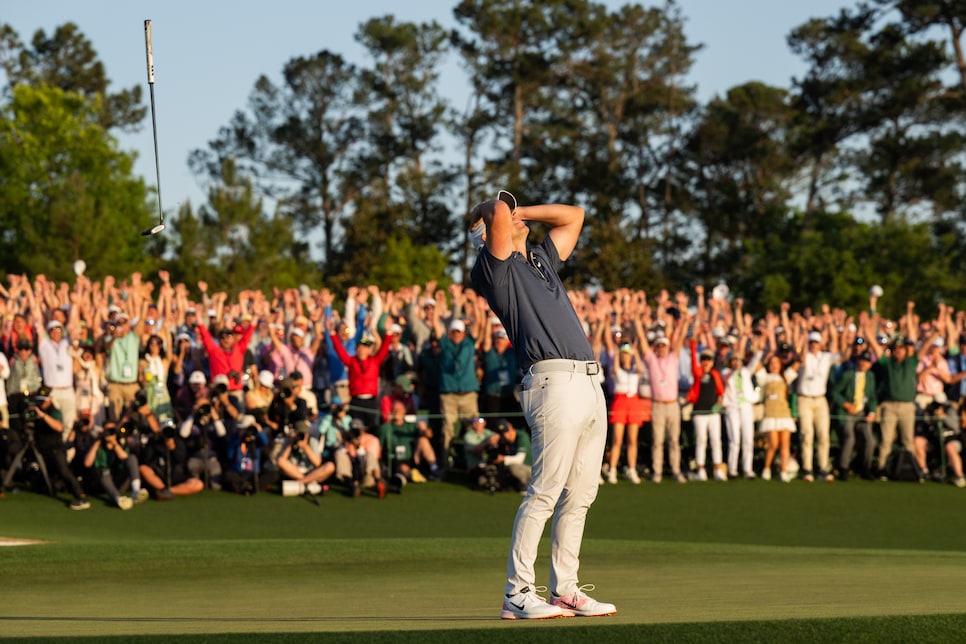
We’re all human, and we can’t always control how we feel. Chasing a sense of relief may have been what put Rory into protect mode, and dragged him into the round’s various low points. It was reaching for something else—a sense of fun, cocky, ‘look at what I can do’ excitement is what pulled him out of it.
“The second shot on 7 today was one I probably shouldn’t have taken on,” he said. “Harry was telling me not to. I was like, ‘No, no, I can do this.'”
Playing in a way that makes you feel a certain way. That’s why we play. It’s not about the score. It’s about having fun. Doing things that you’ll look back on, and remember fondly, regardless of the outcome. And ironically, it’s chasing that feeling that will give you your happily ever after.

This article was originally published on golfdigest.com




